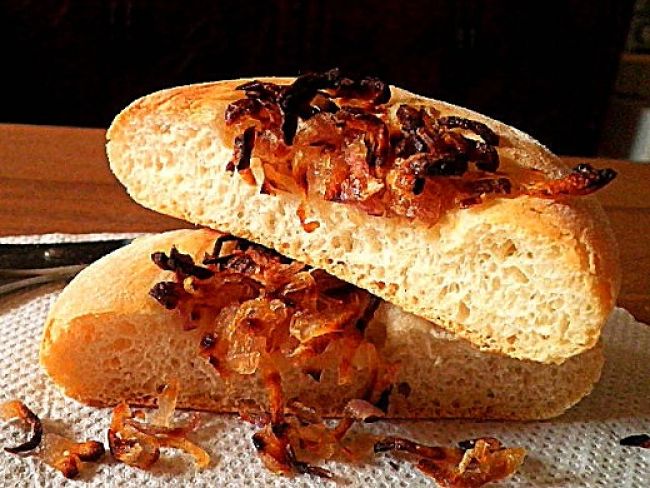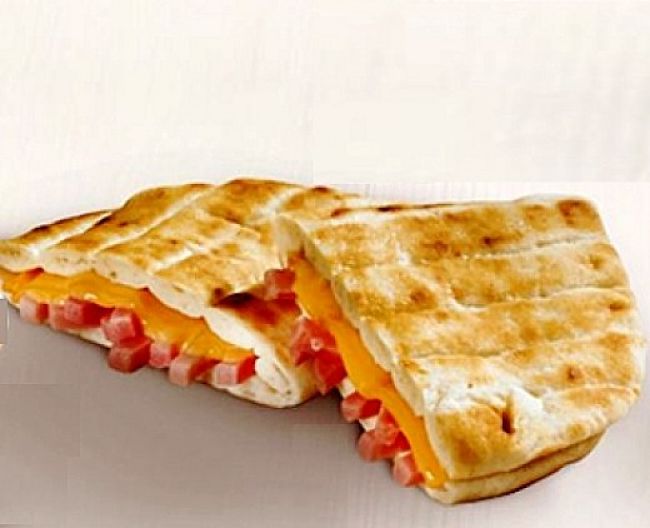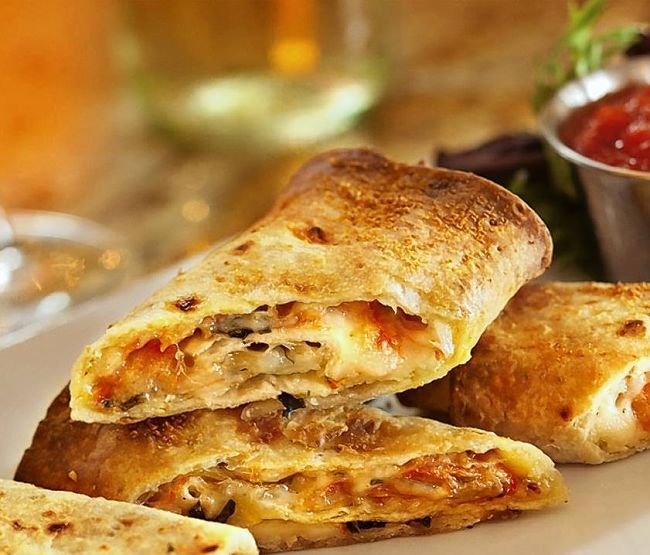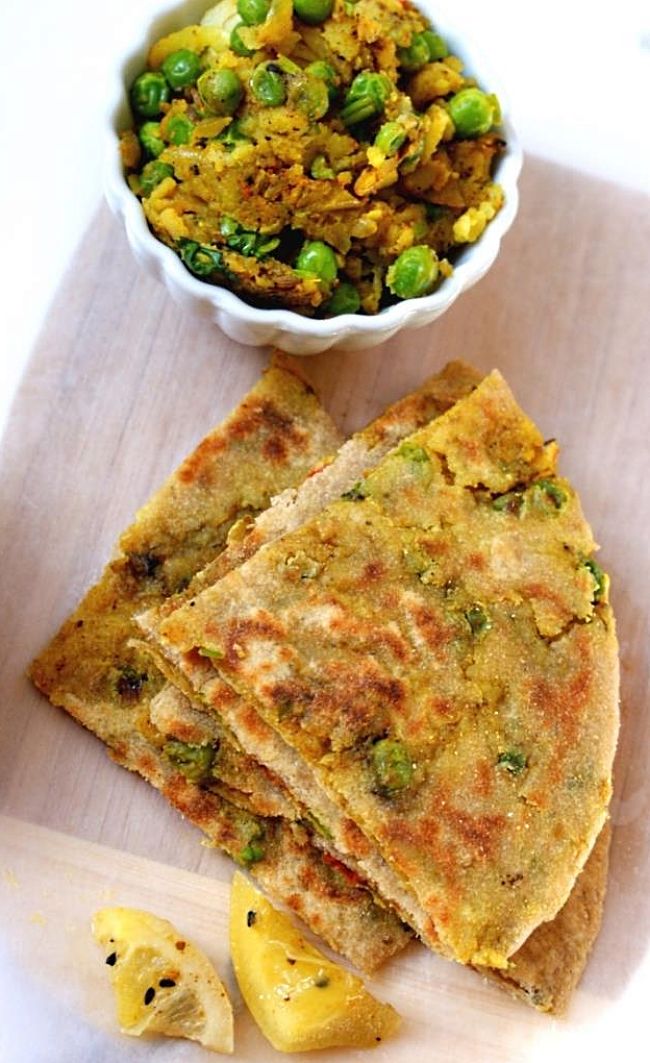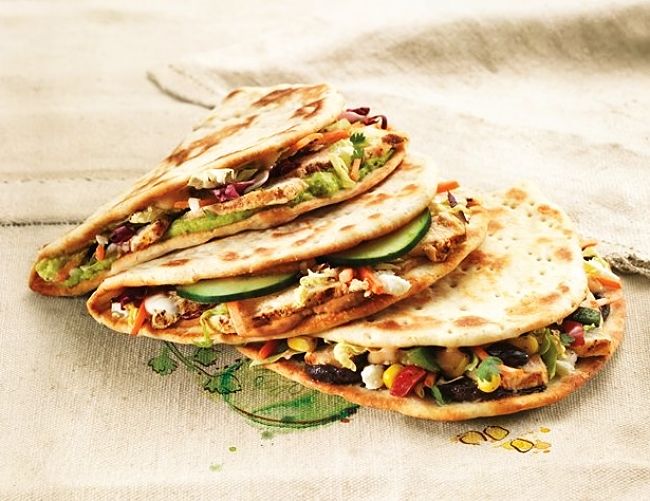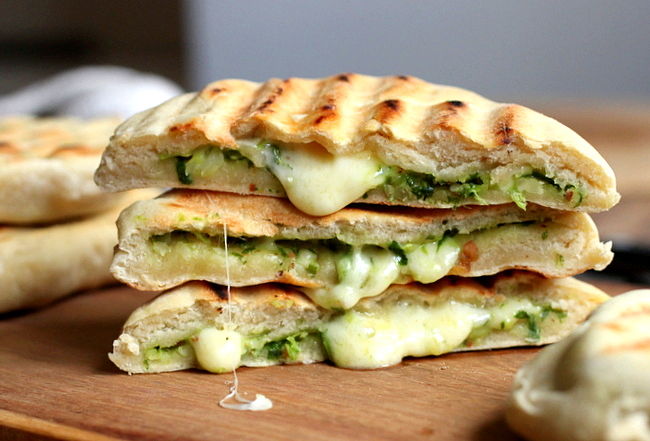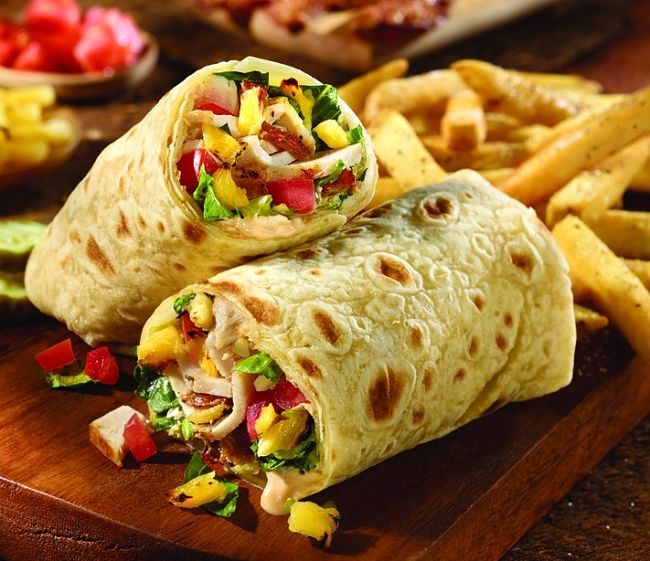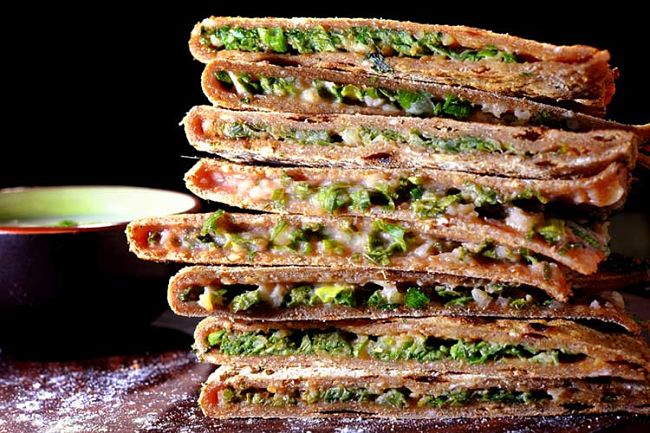Filled Flatbread Recipes and Easy Flat Bread Pizza Recipes
Homemade flatbread is a delight, much better than the ones you can buy, and this article contains a wonderful collection of filled flatbread recipes and recipes for flatbreads that provide a healthy base for pizzas.
Most people bake the flatbreads, then split them and add filling after baking, but the best way to really enjoy them is to add the filling before baking them and to put the filling on top as a type of pizza.
This way the filling becomes integrated into the bread greatly enhancing the flavor.
Otherwise if you add the filling later the dish can become like a giant sandwich and the filing always remains an additional to the bread rather blending subtlety into it.
This article shows you how to easily make your own flatbread and provides many recipe ideas for filled flatbreads for you to try.
They can be used as a pizza base and using the wholemeal flower option increases the nutrition benefits compared with a standard pizza base.
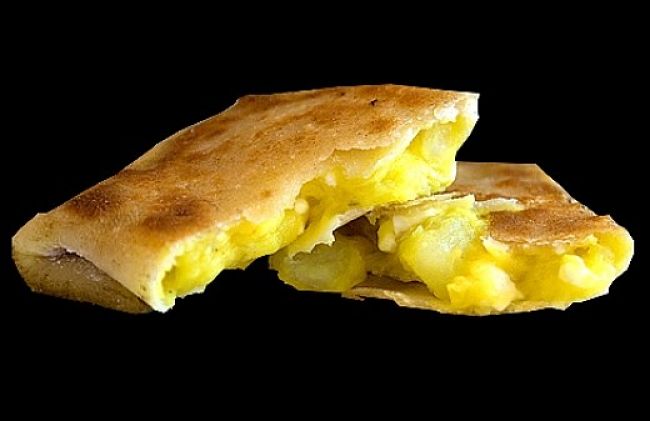
Flatbread Dough Recipe (using yeast)
- 500 g ( 1 lb) good quality white bread flour
- 10g (0.5 oz) salt
- 10g (0.5 oz) instant yeast (or fresh yeast)
- 30g (1.5 oz) unsalted butter
- about 300 ml water
Dissolve the yeast in 1/4 cup warm water with a teaspoon of honey. Set aside for about 10 minutes until the yeast is activated and starts to froth. Place the flour into a large, warm mixing bowl, add the salt, butter and 2/3 of the water.
Mix with a wooden spoon. Slowing add portions of the remaining water until all the flour is mixed in. Roughly bring the mixture into a ball in bowl with your hands.
Transfer the dough to a lightly floured board and knead vigorously for about 5-10 minutes, or until the dough begins to resist, feels smooth and silky. Cover your hands with a few drops of oil and rub over the dough ball and transfer it back to the mixing bowl. Cover the ball with a warm tea towel and set it aside in a warm place to rise for about 60 minutes until the dough has doubled in size. You can do this by floating the bowl in a partially filled sink of warm water. You can also so it by warming the oven using the minimum setting and turning the element off before add the bowl.
After allowing the dough to rise, tip the dough out on to a floured surface, and knead very gently to remove the larger air bubbles. Break the ball into about 12 equal-sized pieces (depending on the size of flatbreads that you want. Roll each piece into a round disk. For unfilled flatbreads bake for about 25-35 minutes at 350 degrees F (175 degrees C).
Wholemeal Flatbread Dough Recipe (no Yeast)
- 3 cups whole wheat flour (plain or self-raising)
- 1 tablespoon extra virgin olive oil
- 2 tablespoons sesame, pumpkin, flax seeds or other seeds (optional)
- 1 1/2 cups water
Mix ingredients together in a large bowl using a wooden spoon or an electric bread mixer, adding the water gradually. The dough should form a firm ball, that is neither too dry or too wet and sticky. Work it with your hands in the bowl and then transfer to a floured board and knead vigorously to a firm and springy consistency. Divide the ball into portions for the size of the flatbreads you want to make. For plain flatbreads bake for 25-35 minutes at 350 degrees F (175 degrees C).
Gorgonzola Cheese and Fresh Fig Filled Flatbread
- 3 large, ripe figs or 5 medium sized dry ones
- Gorgonzola cheese or similar
- Dough made from 1 1/2 cups of flour divided into 6 portions, unrolled
- A small amount of olive oil
Slice the figs into quarters or eighths. Make indentations in each dough ball and simply push pieces of fig and small pieces of gorgonzola cheese. Pinch the dough to seal over the insertions to seal it. Continue inserting the cheese and dough into the six pieces of dough. Take each ball and roll out to a medium thick disk about 16 cm (6 inches).
Place all the disks onto one or two baking sheet and bake at 350 degrees F (175 degrees C) in a pre-heated oven for 30-40 minutes. For extra taste they can be cooking in a heavy frying pan over moderate heat. Flatbread have traditional been cooked on a hot surface, even in an oven.
Rub each flatbread with a little olive oil and pan cook for 3-4 minutes. Once they have begun to show darkened spots, flip them over and cook the other side. A little blistering on the surface is good. Don't undercook them as a crust adds flavor and texture. Remove and serve immediately while hot.
Aubergine and Herb Flatbreads
Grill or bake aubergines slices and poke into dough balls as above.
Slice a medium size aubergine in half and place it in a baking dish, with cut-side up. Make a series of deep criss-cross cuts into the flesh. Drizzle a little olive oil over the aubergine slices and bake at 200 degrees C (390 degrees F) for 25-30 minutes or until completely soft. Or you can grill or barbecue the aubergine. Scrape the flesh off the skins into a mixing bowl. Chop thyme leaves or other herbs, mix with salt and black pepper, and blend wit the aubergine. Push the aubergine pieces into holes poked into the dough balls (as above). Cook in the oven or heavy pans.
Potato Filled Flatbread (Indian Parathas)
- 2 medium Cooked Potatoes diced (boiled or baked))
- Oil or Ghee for pan frying
- 1 teaspoon Amchoor (Dried mango powder)
- Salt to taste
- 1 teaspoon chopped hot green Chilies
- 1 teaspoon chopped Ginger
- Coriander leaves finely chopped
- 1/4 cup chopped Onion
Mix all the ingredients well in a bowl. Take portion of dough about the size of a medium lemon, roll out to form a 4 inch (10 cm) diameter circle. Place some potato stuffing in one half of the dough and fold over to cover the stuffing, seal and flatten. The flat breads can be baked or fried by heating a heavy flat bottom pan on medium heat. Cook the paratha for about 30 seconds on each side. Drizzle some oil on the cooked sides and flip again and repeat the cooking while pressing down lightly with the spatula. Keep cooking until the flatbread browns on the outside - longer if you want a crisp crust. Serve hot with yogurt and coriander-mint chutney.
Potato and Feta Stuffed Flatbreads
- 1 large potato, peeled, boiled or baked and mashed
- 1/2 teaspoon seasoned salt
- 1/8 teaspoon turmeric
- 1/4 cup feta cheese, crumbled
- 1-1/2 Tablespoons of olive oil or butter
- 2 cloves garlic, minced
- 1 small onion, chopped
- Salt and pepper to taste
Fry the onions in butter or olive oil until translucent. Add the spices and fry until fragrant. Then add the potato and all the other ingredients and season to taste. Set aside to cook. Roll portions of dough into 10 inch (20 cm) rounds. Place about 1 tablespoon of the potato mixture in the center of each round, shape into a square about 4 inches (10 cm) in size. Fold the edges of the dough and flatten to seal. Heat a heavy cast iron skillet over medium heat with a little oil. Place the filled flatbread in the skillet one at a time with the base down on the pan. Cook until brown patches appear on the dough. Flip over, brush with oil or butter and cook the folded side until brown.
Flat Bread Pizzas
The flatbread doughs make a delightful change from standard pizza doughs. Use a thick base and let the filling soak into the bread for a delight dish.
